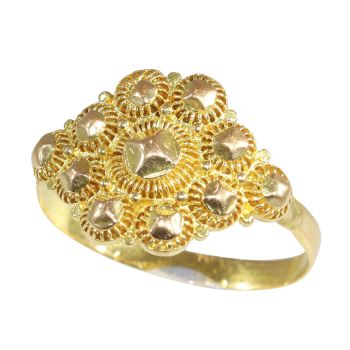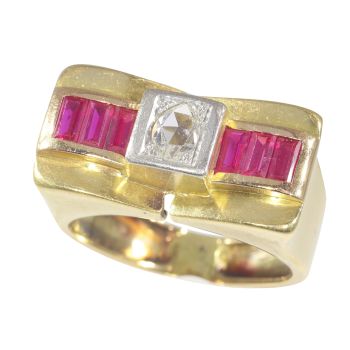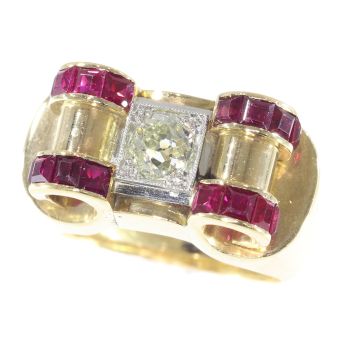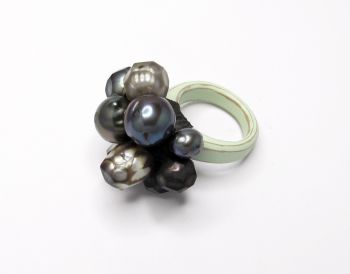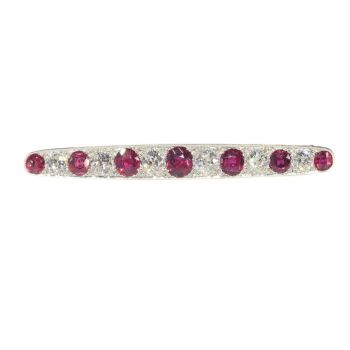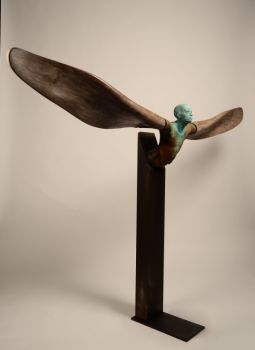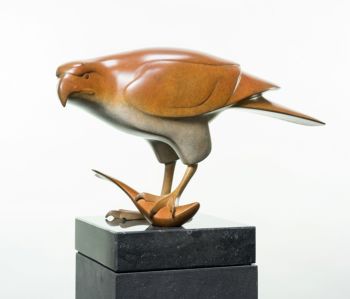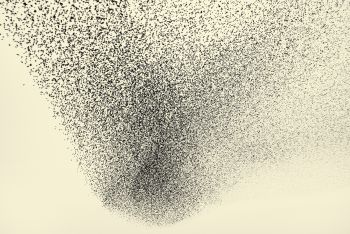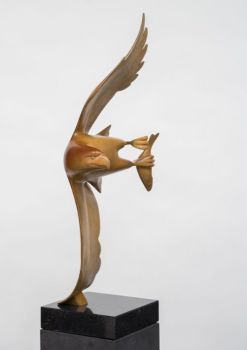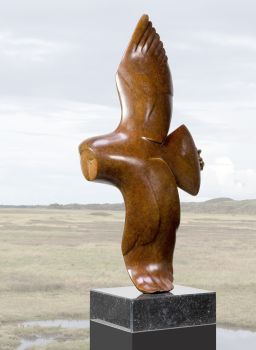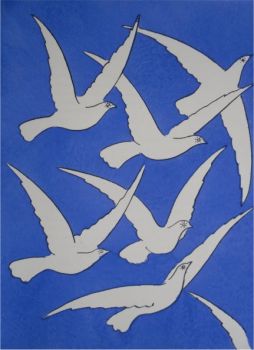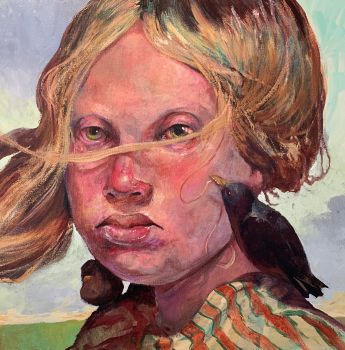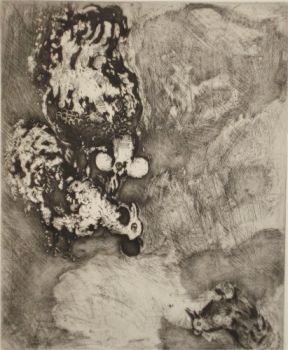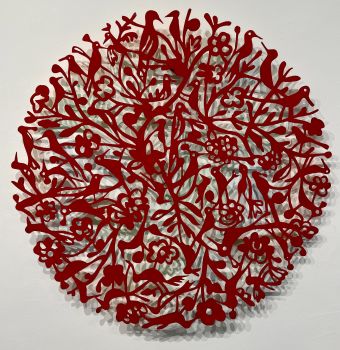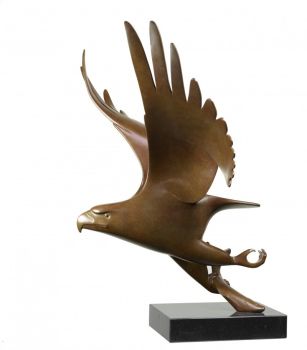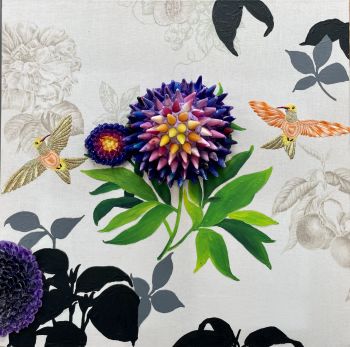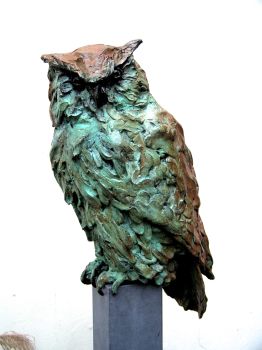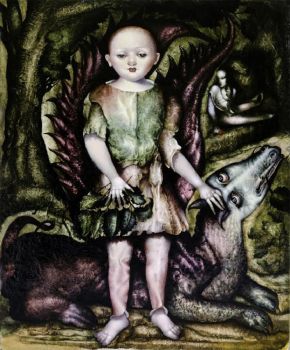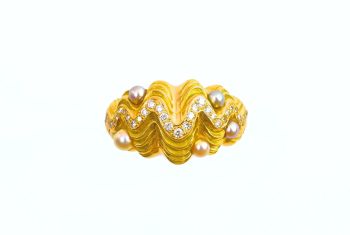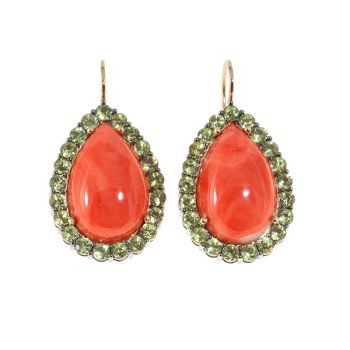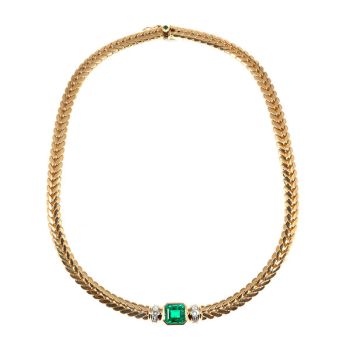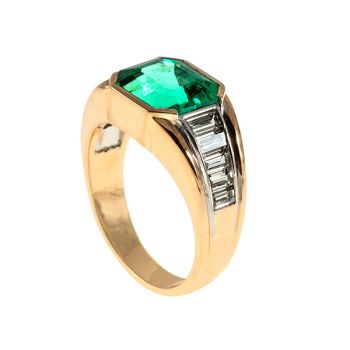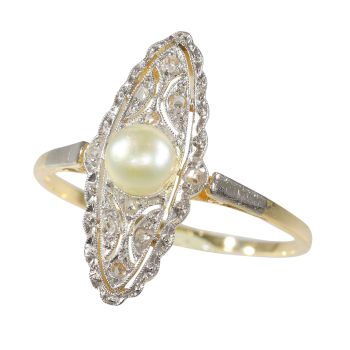Oggetto d'arte - Antico oggetto vittoriano francese raffigurante la favola di Esopo 1860
Artista Sconosciuto
Giallo oroOroPerlaArgento
€ 18.000
Adin Fine Antique Jewellery
- A proposito di opere d'arte
This French 18K yellow gold and silver Victorian object d'art is a depiction of substance in many ways. With its wide gold outlined wings, crest and tail, the silver downy stork triumphs audaciously with an amphora crafted from a grand natural saltwaterbaroque pearl with a gold rim on top and a seed pearl in the gold bottom. Bringing the jar with its gold claws to its gold beak and looking right at you with its cabochon onyx and turquoise eyes, this piece of decorative art is claw-set on a gold shank,which follows the shape of the bird and makes it possible to wear it as a ring. Now, who should be the fox that deserves what's coming her way in your own fable by Jean de La Fontaine?
The inspiration for this jewellery piece lays more likely in the translation of Aesop's "The fox and the stork" by Jean de La Fontaine. In the 17th century, he was the most famous French fabulist and an example for writers throughout Europe.
We hope you will enjoy looking and learning about this piece as much as we did!
Master goldsmith: Although we couldn't find any master mark in the stork, it is because of the level of craftmanship that we think that this could have been madeby the house Froment-Meurice.
Antique jewelry object group: object d'art (possible to wear as ring)
Condition: excellent condition
- (more info on our condition scale)
Country of origin: France
Period: ca. 1850-1870
- (events and facts in 1860)
Style: Victorian - Victorian decorative arts refers to the style of decorative arts during the Victorian era. The Victorian era is known for its eclectic revival and interpretation of historic styles and the introduction of cross-cultural influences from themiddle east and Asia in furniture, fittings, and Interior decoration. Victorian design is widely viewed as having indulged in a regrettable excess of ornament. The Arts and Crafts movement, the aesthetic movement, Anglo-Japanese style, and Art Nouveaustyle have their beginnings in the late Victorian era.
- See also: Victorianor more info on styles
Source of inspiration: Aesop's fable: "The fox and the stork".
Aesop's fable: "The Fox and the Stork":
At one time the Fox and the Stork were on visiting terms and seemed very good friends. So the Fox invited the Stork to dinner,and for a joke put nothing before her but some soup in a very shallow dish. This the Fox could easily lap up, but the Stork could only wet the end of her long bill in it, and left the meal as hungry as when she began.
"I am sorry," said the Fox, "the soup is not to your liking." "Pray do not apologize," said the Stork. "I hope you will return this visit, and come and dine with me soon."
So a day was appointed when the Fox should visit the Stork; but when they were seated at table all that was for their dinner was contained in avery long-necked jar with a narrow mouth, in which the Fox could not insert his snout, so all he could manage to do was to lick the outside of the jar.
"I will not apologize for the dinner," said the Stork: "One bad turn deserves another."
More background information on Aesop - Aesop (c. 620–564 BC) was a fabulist or story teller credited with a number of fables now collectively known as Aesop'sFables. Although his existence remains uncertain and (if they ever existed) no writings by him survive, numerous tales credited to him were gatheredacross the centuries and in many languages in a storytelling tradition that continues to this day. In many of the tales, animals speak and have human characteristics. (from: Wikipedia)
Theme: The stork holding and eating from the long-necked jar with narrow mouth
Material: 18k yellow gold and silver.
- (more info on precious metals)
Technique: The stork is skillfully modelled and engraved in silver that has been richly and yet tastefully embellished with gold accents. See the stork's crest, beak, claws, tale, and the outlines of the wings.
Extra information: It is almost certain that this piece of art started as a decoration for another, even more, impressive piece. The way the ring to hold it, looks rather simple on first sight but we fully understand and supportthe way of thinking of the goldsmith who made it. It respects the original piece of art by a master goldsmith and does not alter it in any way.
That is why we decided to offer it in the same manner as we found it.
Precious stones: One big baroque pearl used as the jar that the stork is holding, one seed pearl at the outside of the bottom of the "jar".Two little cabochon cut stones, one onyx and one turquoise
- (more info on precious stones)
Birthstones: Pearl is the birthstone (or month stone) for June, turquoise for December and onyx for July.
- (more info on birthstones)
Hallmarks: The ring is hallmarked with the French control mark for 18K gold representing an eagle's head that was in use in France from about 1838. We couldn't find any hallmarks on the stork.
- (more info on hallmarks)
Dimensions: 3.72 cm (1.46 inch)
Weight: 17.30 gram (11.12 dwt)
Ring size Continental: 54 & 17¼ , Size US 6¾ , Size UK: N
Resizing: Free resizing (only for extreme resizing we have to charge).
- (more info on ring sizes)
Reference Nº: 09357-4261
Copyright photography: Adin, fine antique jewelry
- A proposito di opere artista
Può succedere che un artista o un creatore sia sconosciuto.
Alcune opere non sono determinate da chi sono state realizzate o sono state realizzate da (un gruppo di) artigiani. Esempi sono statue dell'antichità, mobili, specchi o firme non chiare o leggibili ma anche alcune opere non sono affatto firmate.
Inoltre puoi trovare la seguente descrizione:
•"Attribuito a …." A loro avviso probabilmente opera dell'artista, almeno in parte
•“Studio di ….” o “Officina di” A loro avviso un'opera eseguita nello studio o nella bottega dell'artista, eventualmente sotto la sua supervisione
•“Cerchio di…” A loro avviso un'opera del periodo dell'artista che mostra la sua influenza, strettamente legata all'artista ma non necessariamente al suo allievo
•"Stile di..." o "Seguace di..." A loro avviso un'opera eseguita nello stile dell'artista ma non necessariamente da un allievo; può essere contemporaneo o quasi contemporaneo
•“Modalità di…” A loro avviso un'opera nello stile dell'artista ma di epoca successiva
•"Dopo …." A loro avviso una copia (di qualsiasi data) di un'opera dell'artista
•“Firmato…”, “Datato…” o “Iscritto” A loro avviso l'opera è stata firmata/datata/inscritta dall'artista. L'aggiunta di un punto interrogativo indica un elemento di dubbio
•"Con firma....", "Con data...", "Con iscrizione..." o “Riporta firma/data/iscrizione” a loro avviso la firma/data/iscrizione è stata aggiunta da qualcuno diverso dall'artista
Sei interessato ad acquistare questa opera d'arte?
Artwork details
Related artworks
- 1 - 4 / 12
Lawrence Alma-Tadema
"Caracalla and Geta: Bear Fight in The Coliseum, AD 203" 1907
Preis auf AnfrageGallerease Selected
 Kuratiert von
Kuratiert vonDanny Bree
1 - 4 / 24Unbekannter Künstler
Bvlgari Tubas Halskette1900
Preis auf AnfrageAns Hemke-Kuilboer Juwelier & Antiquair
1 - 4 / 24- 1 - 4 / 24
- 1 - 4 / 24
- 1 - 4 / 12













































